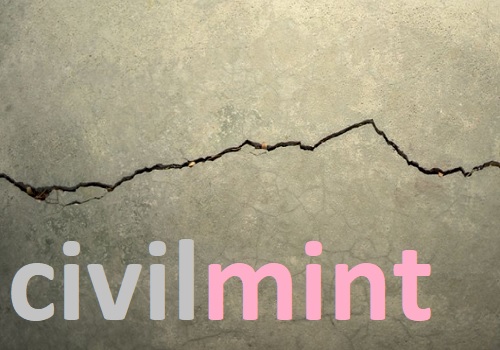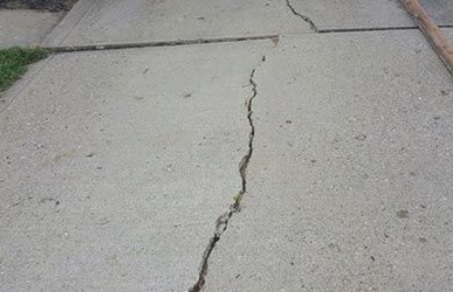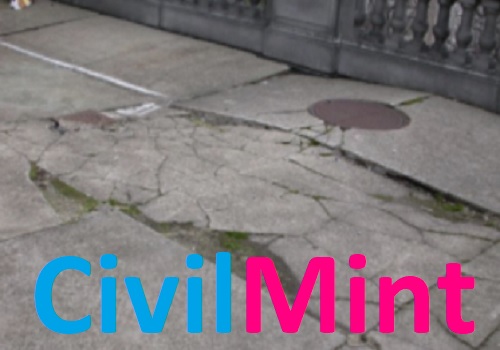Table of Contents
Introduction Of Concrete Cracks
Fine concrete cracks are very common but often misunderstood. Generally, when someone buys a home or apartment sees a crack in his slab or wall, he automatically assumes there is something wrong. Some types of cracks are inevitable.

The contractor tries his best to control the cracking, this is done by properly preparing the sub-base, assuring that the concrete is not too wet, utilizing reinforcement where needed, and by properly placing crack control joint and expansion joints. Sometimes cracks happen in spite of every precaution taken.
ACI i.e American concrete institute focus on this issue and addresses “Even with the proper construction and very best floor designs, it is unrealistic to expect curl-free and Crack-free floors. So, every owner should advise by both client and designer to expect some amount of cracking and curling on every project.
Types Of Concrete Cracks
The most common types of cracks generally found in concrete are as follows.
- Plastic Shrinkage Cracks.
- Expansion Concrete cracks.
- Cracks Caused by heaving.
- Cracks caused by Settling.
- Cracks Caused by overloading the slab.
- Cracks Due to Early Drying.
1. Plastic Shrinkage Cracks
Plastic Shrinkage is probably the most common reason for early cracks in concrete. When the concrete is in its plastic state i.e before hardening it is full of water. This water in the slab takes up space and makes the slab a certain size. When curing the slab loses moisture it gets a bit smaller. Because concrete is a very rigid material, the shrinkage creates stress on the concrete slabs. As the concrete shrinks, it drags across its granular sub-base. This hindrance to its free movement creates stress that can literally pull the slab apart. When the stress becomes too great for the hardened concrete, so in order to relieve tension slab will crack. During the hot weather, shrinkage cracks can occur as early as a few hours after the slab has been poured and finished.

One significant factor that contributes to shrinkage is mixing the concrete too wet. If excessive water is introduced into the mix, the slab will shrink more than if the correct amount of water was used. This is due to the additional water taking up more space, pushing the solid ingredients in the mix further apart from each other, so when the excess water leaves the slab, the solid particles have larger voids between them. these empty surfaces make the concrete weaker and more prone to cracking. Plastic shrinkage cracks can happen anywhere in a slab or wall nut on re-entrant corners it appears the most .this type of corners are pointed into the slab. For Example, while concrete is poured around a square column, there create four re-entrant corners, because the concrete cannot shrink around the corner, the stress will cause concrete to crack from the corner to that point.
2. Expansion Concrete cracks
Expansion is another reason for concrete cracks. As temperature rises a concrete slab, like anything else, will expand as the temperature rises. This can cause a good amount of stress on a slab. As the concrete expands, it pushes against anything in its path, like a brick wall or an adjacent slab of concrete.

An Expansion joint is a point of separation, between two static surfaces. Its Whole depth is filled with a material that is compressible such as cellulose fiber, timber, tar. Compressible material acts as a shock absorbent which can absorb as it is compressed. Thus the cracks can be prevented when the stress is relieved on the concrete.
3. Cracks Caused by heaving
Another reason which contributes to cracking is ground movement caused by the freeze cycle. During such cycles, the frozen ground can lift as much as no. inches, and when the ground thaws it settles again. The slab will crack if the slab is not free to move with the soil. The large tree roots can also cause concrete to heave. If the tree is located too close to a concrete slab, the growing roots can lift and crack the concrete.

4. Cracks caused by Settling
If a large tree is removed from near a concrete slab the buried root decomposes. The formation of the void can cause the concrete to crack and the ground to settle. Settling is also termed subsidence.
Settling is very common over the trenches where plumbing pipes and utility lines are laid. If concrete is placed on a poorly compacted trench, the void created by settling can cause a crack across the slab which is unsupported. Another place where concrete commonly settles is near a house. Whether the home is built in crawlspace or basement, the over-dig is eventually backfilled. Unless the material which is to be backfilled is compacted in lifts as the over-dig is filled, it will settle over time. This settling will cause any concrete poured upon it to settle along with. Most of the time this setting will cause the concrete to crack and tilt back toward the house, creating a negative slope.
5. Cracks Caused by overloading the slab
One of the factors which contribute to cracking is placing excessive weight on top of the slab. Although concrete is a very strong material, concrete still has load limits when you hear someone say 5000psi concrete, they are referring to the fact that it would take 4000 pounds per square inch of pressure to damage it. In Residential construction, concrete is rarely overloaded as far as compressive Strength is concerned. That is to say, the weight doesn’t pulverize or crush the concrete. In most cases, the excessive weight is too much for the ground underneath the concrete. This usually occurs after heavy rain or snowmelt when the ground is saturated and soft.
The underlying soil becomes soft and spongy when the groundwater migrates under the concrete. Concrete pressed down when on a point an excessive weight on the slab is applied. Since concrete compressive strength is more than the flexural strength, the concrete bends to its breaking point. Driving the heavy vehicle on the edge of the concrete slab creates a similar type of crack.
6. Cracks Due to Early Drying
Early drying cracks are very fine surface cracks that resemble spider webs or shattered glass. They can happen on any concrete slab when the moisture loses too quickly. Crazing cracks can be unattractive, but not a structural problem. There is no way to repair them because they are very fine.
During the concrete stamping process crusting cracks often happen. They usually occur on windy or sunny days when the top of the slab dries out sooner than the bottom. So when the stamp is embedded the top becomes crusty, and it pulls the surface apart near the stamped joints causing small cracks around the outside edges of the “stones”. It may be patched if desired.
How To Fix Cracks In Concrete
Watch the following video to know how to fix cracks in concrete.
